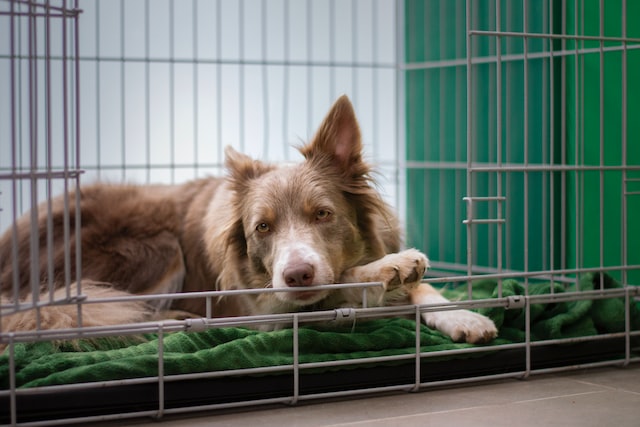Crate training is a method of training in which a dog is kept in a crate or kennel when they are not able to be supervised. The crate is meant to be a safe and comfortable space for the dog, and is typically used as a sleeping area, as well as for preventing destructive behaviour when the dog is left home alone. Crate training can take some time and patience, but it can be a useful tool for teaching your dog good behaviour and creating a happy and well-behaved pet.

When to start crate training?
The best time to start crate training your dog is when they are a puppy. Puppies are more receptive to new training methods and are more adaptable to new environments. It is also easier to teach a puppy to associate the crate with positive experiences, such as meal times and treats, which will make them more likely to willingly enter the crate.
How to start dog crate training?
Here are some steps you can follow to start crate training your dog:
- Choose the right crate size: The crate should be large enough for your dog to stand up, turn around, and lie down comfortably. It should also be sturdy and made of materials that are safe for your dog. some crate can be partitioned so your puppy doesn’t feel lost in the crate when it’s small, or you can block some of it off with a cardboard box.
- Introduce the crate gradually: Start by leaving the crate open and placing a few treats or toys inside. Encourage your dog to explore the crate and reward them with praise and treats when they enter.
- Feed your dog in the crate: Place your dog’s food and water bowls inside the crate and encourage them to eat inside. This will help them associate the crate with positive experiences, such as meal times.
- Close the door: Once your dog is comfortable eating in the crate, start closing the door for short periods of time while they are eating. Gradually increase the amount of time the door is closed, and give your dog a treat when they are quiet and calm.
- Leave the house: Once your dog is comfortable being in the crate with the door closed, start leaving the house for short periods of time. Gradually increase the amount of time you are away, and make sure to provide plenty of toys and treats to keep your dog entertained.
Remember to always be patient and consistent with crate training. It can take time for your dog to become comfortable with the crate, so be sure to reward good behaviour and provide plenty of positive reinforcement.
Covering the crate at night
Covering a dog’s crate at night can help create a sense of security and comfort for the dog, and can also help to block out any distractions that might disrupt their sleep. Some dogs may feel more relaxed and sleep better in a dark and quiet environment, so covering the crate can be a helpful tool for promoting good sleep habits. However, it’s important to make sure that the crate is well-ventilated and that the cover is not too heavy or thick, as this could cause the dog to overheat. It’s also a good idea to check on your dog periodically throughout the night to make sure they are comfortable and not distressed.
Where to put the dog crate
The best place to put a dog crate in your house is in an area that is quiet and comfortable, but still accessible to the rest of the family. The crate should be placed in a spot where your dog can see what is going on in the house, but not be in the way of high-traffic areas. It’s also a good idea to place the crate near where your family spends most of their time, such as in the living room or family room. Avoid placing the crate in a damp or drafty area, and make sure it is not near any heat sources or appliances that could be dangerous for your dog.
It’s always a good idea to consult with a veterinarian or professional dog trainer if you have any questions or concerns about crate training.
